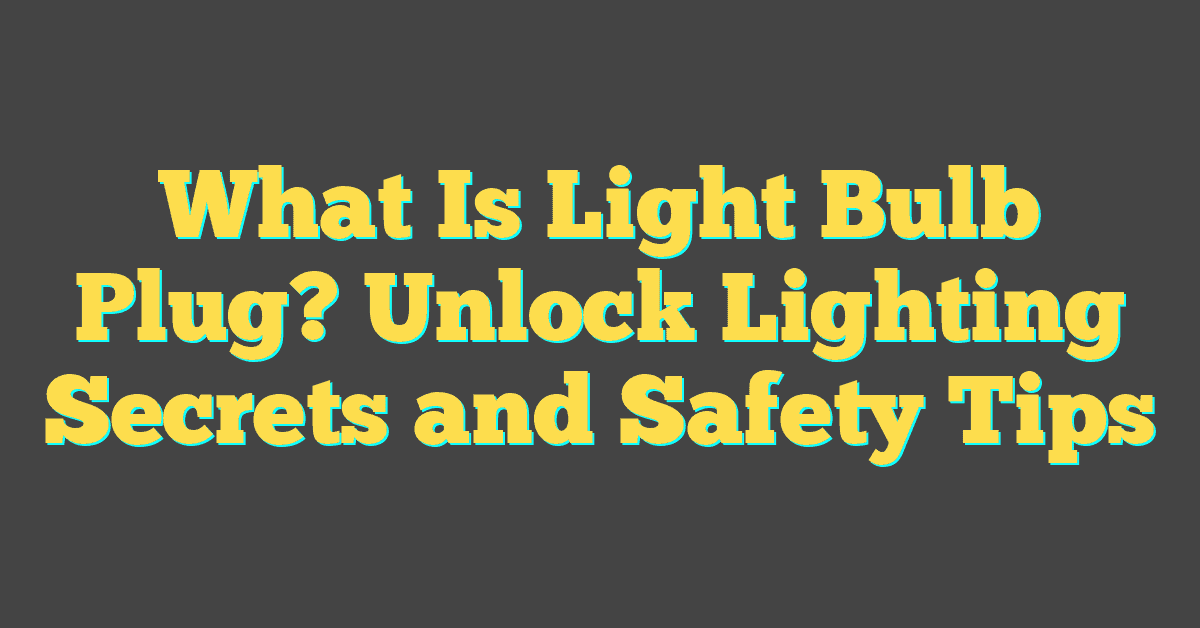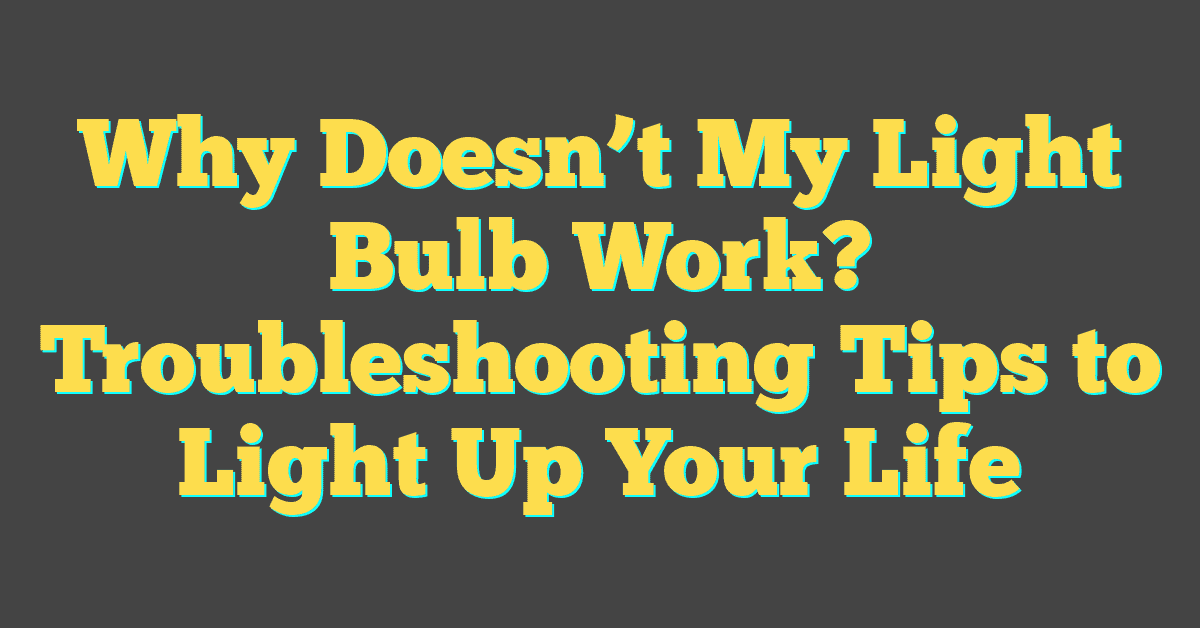Ever found yourself squinting at the lighting aisle, wondering which bulb will fit your fixture? You’re not alone. Determining light bulb size can be a puzzler, but it’s easier than you might think.

Why Knowing Light Bulb Size is Important
Imagine you’ve picked up the perfect light fixture for your DIY home project. You’re ready to see it light up but then realize the bulb doesn’t fit. Frustrating, isn’t it? That’s one of the reasons why knowing the correct light bulb size is pivotal. But that’s not all. Let’s illuminate a few more reasons why this knowledge is crucial.
Firstly, efficiency is key. Using the right size ensures that your light bulb operates at peak efficiency, saves energy, and consequently, lowers your utility bills. Incorrectly sized bulbs can cause poor illumination or may not even fit into the fixture, wasting both your time and resources.
Then there’s aesthetics to consider. The correct light bulb size complements your fixture and room’s design. A bulb that’s too large or too small can stick out awkwardly and disrupt the visual flow of your space. It’s not just about brightness; it’s about how seamlessly the bulb integrates with the ambience you’re aiming to create.
Safety is another aspect you can’t overlook. An improper size can lead to overheating or electrical issues, posing a fire hazard. This is especially true for enclosed fixtures, where bulb size and heat dispersion need to be compatible.
- Proper light bulb size leads to:
- Optimized energy efficiency
- Aesthetic harmony
- Increased safety
Moreover, life expectancy of your light bulbs might take a hit if you’re consistently fitting the wrong size. A bulb that’s too tight in its socket is under constant stress, which can shorten its lifespan and lead to more frequent replacements.
Lastly, understanding light bulb sizes is invaluable for maintaining historical and specialty fixtures. These often require specific types and sizes of bulbs to preserve their integrity and function, which is vital for your cherished antiques or customized lighting applications.
So, the next time you’re out shopping for bulbs or planning your lighting scheme, remember that size does matter. It’s not just a practical detail, but a pillar of sound lighting design and application.
Different Types of Light Bulbs
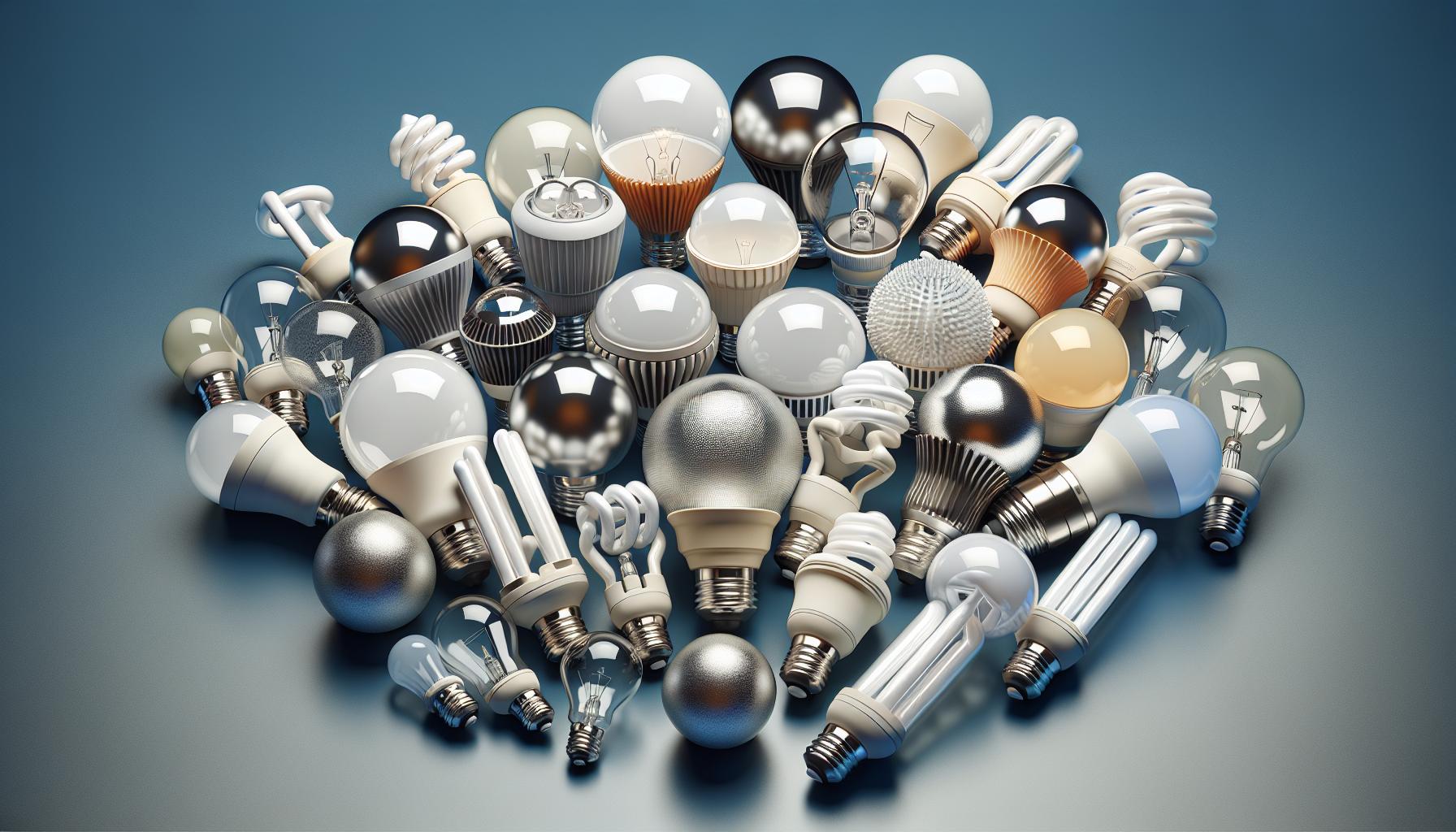
As you dive into the world of light bulbs, it’s crucial to recognize that they’re not all created equal. Each bulb type not only influences the atmosphere of your space but also the efficiency and longevity of the fixture it illuminates.
Incandescent bulbs are the classic choice, providing a warm, inviting glow. Though they’re being phased out in favor of more energy-efficient options, they’re still a common sight in many households. Their sizes range widely, so checking the fixture requirements is a must.
Next up are LED bulbs, the champions of energy efficiency and long life spans. These bulbs come in a variety of shapes and sizes, from standard A19 to more unique G series globes. They can save you a considerable amount on your electricity bill over time, not to mention the hassle of less frequent replacements.
Compact Fluorescent Lamps (CFLs) strike a balance between incandescents and LEDs. They have a characteristic spiral shape but are available in a familiar bulb form. It’s essential to match the size precisely because an oversized CFL can look out of place, and if it’s too small, it may not provide adequate light.
For a touch of sophistication, you might consider halogen bulbs. Resembling incandescents in shape and light quality, they’re typically used in special applications such as pendant lights or under-cabinet lighting. Remember, they run hotter than LEDs and CFLs, so it’s key to choose the right size for safety.
Specialty bulbs, such as those used in historical fixtures or unique lamps, often have their own sizing standards. Antique-style bulbs, with their distinctive filaments and shapes, require careful selection to preserve the fixture’s vintage charm.
« What Size Light Bulb for Range Hood: Brighten Your Cooking Space
What Are Light Bulbs Used For in FarmVille 2? Illuminate Your Gameplay »
When you’re replacing bulbs, make sure to look for the following identifiers which can be found on the bulb or packaging:
- Wattage: This tells you how much energy the bulb consumes.
- Light output: Measured in lumens, this indicates how bright the bulb is.
- Shape code: This series of letters and numbers indicates the exact shape and size of the bulb, which is vital for ensuring a proper fit.
Understanding Light Bulb Labels
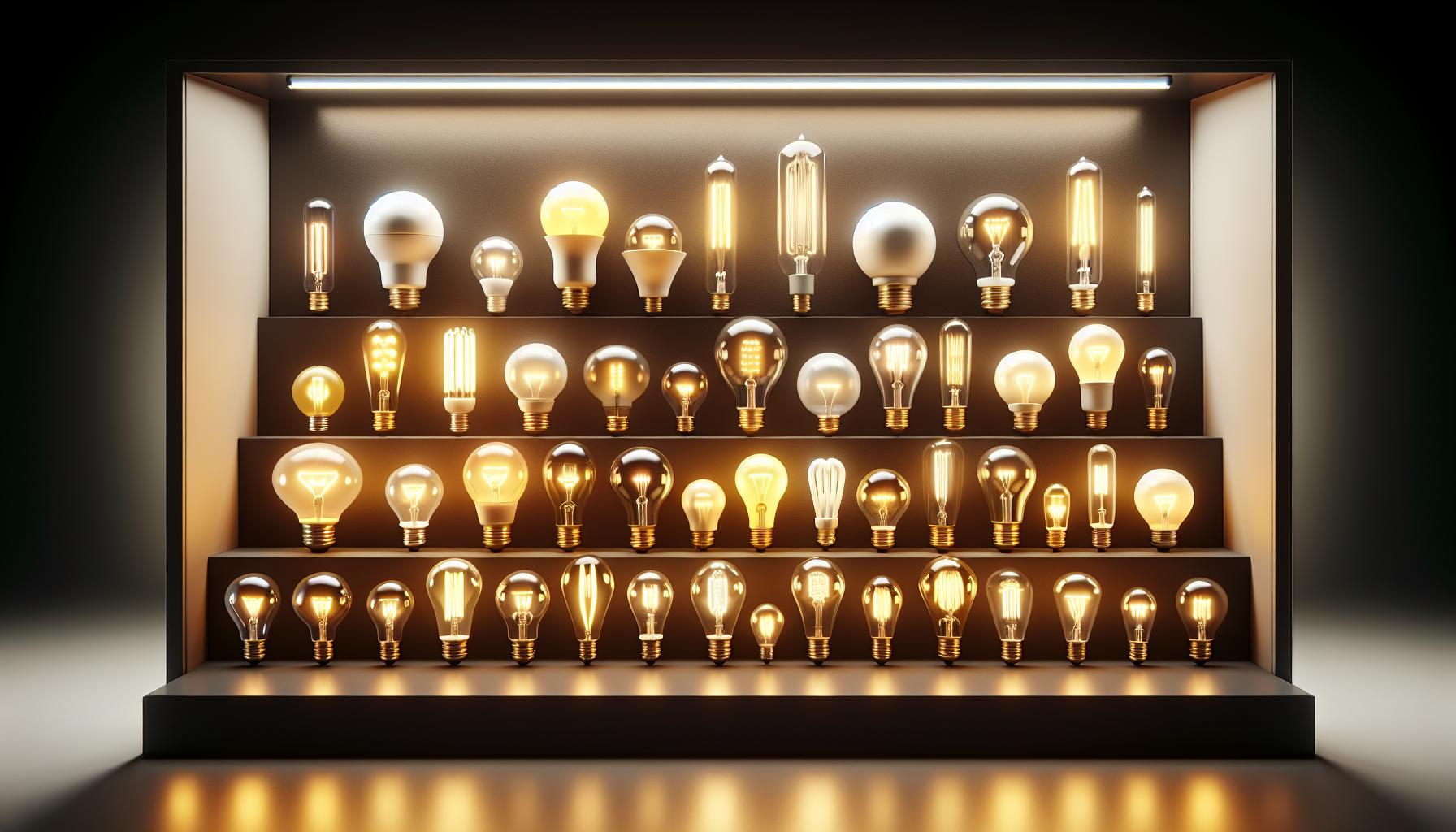
When you’re navigating the lighting aisle, every bulb speaks to you through its label — it’s like a mini instruction manual if you know how to read it. Let’s decode the jargon so you can choose bulbs like a pro.
First off, you’ll encounter something called lumens. This number indicates how bright the bulb is. The higher the lumens, the brighter the light. It’s a straightforward shift from the old way of relying on watts which actually measure energy consumption not brightness. Next, you’ll see the color temperature, measured in Kelvins (K). If you adore a warm, cozy glow for your living room, search for bulbs around 2700K, while a more invigorating and alert atmosphere for a home office might require something closer to 5000K.
Don’t let the shape code trip you up. It’s a blend of letters and numbers that tell you the exact shape and size of the bulb — crucial for those specialty lights or fixtures where only a certain shape will do. “A19” for instance, is your classic light bulb shape, but there’s a multitude of others.
You might also see a life expectancy rating, often listed in hours. This is how long the bulb should shine before it goes kaput. LED bulbs tend to boast the longest lifespans, sometimes upwards of 25,000 hours, making them a darling for both your wallet and the environment.
Lastly, take note of the energy usage labeled in watts or a new metric called lumens per watt (lm/W). This is how you gauge the bulb’s energy efficiency. Higher lm/W ratios mean more light for less power — that’s the sweet spot for both reducing your energy bills and lowering your carbon footprint.
Armed with this knowledge, you’ll hack the lighting lingo and make empowered choices that illuminate your space exactly as you envision. Lights shape our perception of the world; you’re now equipped to shape the lights to your world.
Measuring Bulb Base

When you’re on the hunt for the perfect bulb, getting the base size right is just as crucial as lumens or color temperature. Here’s a quick guide to help you measure the bulb base accurately, ensuring a snug fit in your lamp or fixture.
First, grasp that the base is the part of the bulb that screws into the fixture’s socket. You’re likely familiar with the common screw-base sizes, sometimes referred to as Edison bases. E26 is your standard base size for most incandescent, halogen, CFL, and LED bulbs in the United States. It indicates that the base diameter is 26 millimeters across.
But don’t get tripped up if you stumble upon an E12 base. These “candelabra” bases are smaller, usually found in decorative lighting like chandeliers. There are, of course, numerous other base sizes, but E26 and E12 are the most common in residential lighting.
To measure your bulb’s base:
- Disconnect the power to the bulb. Safety first—always ensure your light fixture is off before attempting to change or measure a bulb.
- Remove the bulb from the socket.
- Using a caliper is best for accuracy; however, a ruler or measuring tape can work in a pinch. Measure the diameter of the base, not the circumference, in millimeters as this is the industry standard.
- Compare your measurement with standard base sizes to find the correct label.
What If Your Bulb Base Doesn’t Match the Common Sizes?
If your measurement doesn’t match the E26 or E12 sizes, don’t worry. Light bulb bases come in several sizes, including E17 intermediate bases and E39 mogul bases for larger commercial fixtures. Just match your measurement to the size chart you can easily find online or at your local hardware store. Remember to also note the base type—whether it’s a screw base (designated by an E) or a pin type base like a GU10.
Learning to measure your bulb’s base might seem minute, but it’s a skill that’ll light up your DIY projects, ensuring that your spaces are well-lit and your fixtures are outfitted flawlessly. With the right knowledge, you’ll never be left in the dark trying to find the perfect fit.
Using a Bulb Size Guide
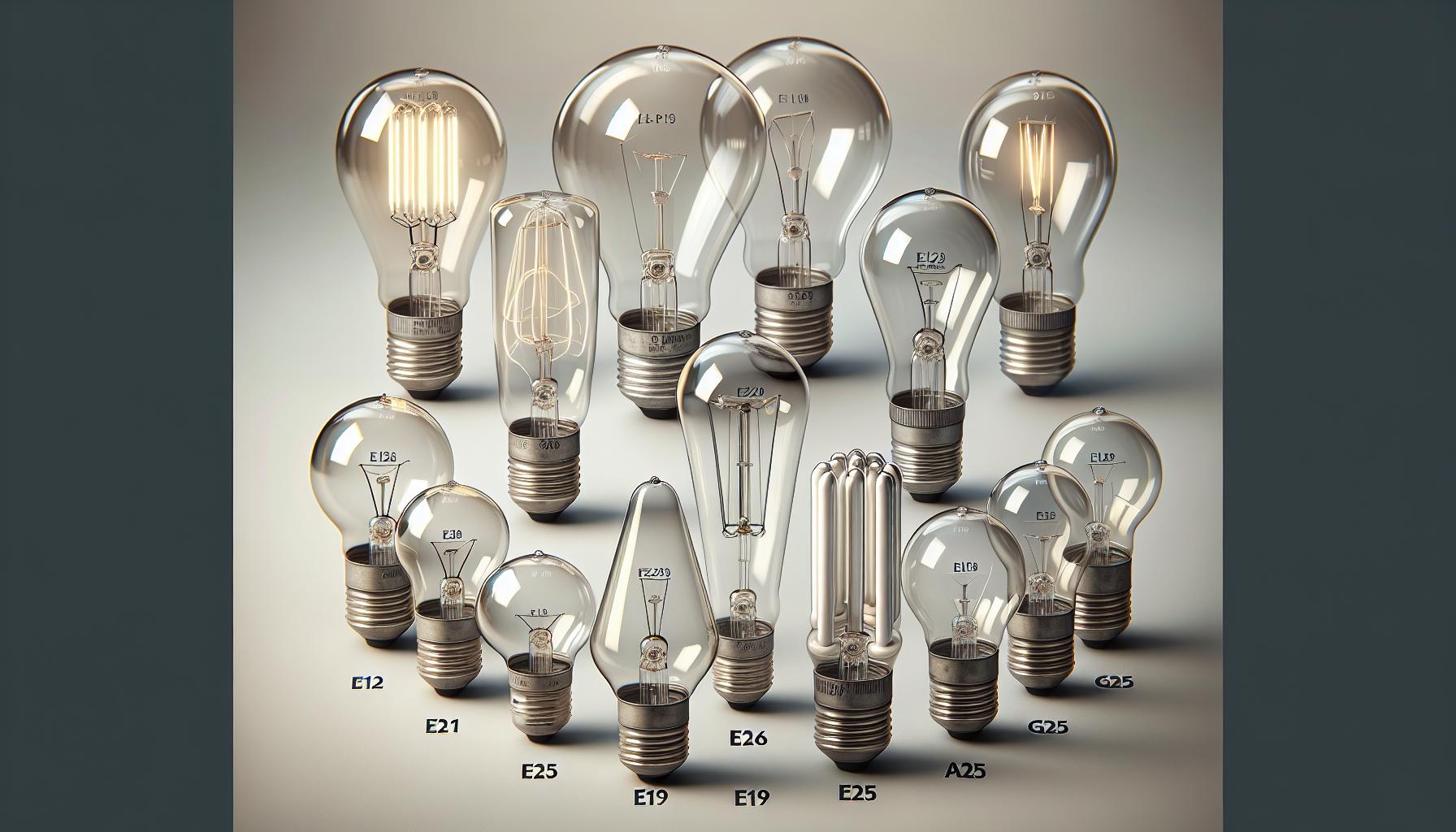
Once you’ve got your bulb base measurements, it’s time to refer to a bulb size guide. This resource is invaluable; it takes the guesswork out of picking the perfect bulb for your fixture. A standard bulb size guide will list the various bulb base types and their corresponding code numbers.
- E12: Typically used for candelabra or “nightlight” bulbs
- E26: The most common size for household bulbs in the US
- E39: Larger base, often found in commercial or industrial settings
But it’s not just about the base. Bulb size guides also include information on the glass part of the bulb – the part that actually emits light. You’ll encounter terms like A19, G25, or PAR38. These codes tell you about the shape and size of the bulb, crucial for ensuring it fits aesthetically and functionally.
| Bulb Type | Code | Typical Usage |
|---|---|---|
| Standard | A19 | Table lamps, ceiling mounts |
| Globe | G25 | Bathroom vanities |
| Reflector | PAR38 | Outdoor floodlights |
By cross-referencing the base measurement with the code from the size guide, you’ll be able to navigate the wide array of options out there. Lighting stores or online retailers often label their products with these codes, so once you know your stuff, shopping for bulbs becomes a breeze.
Remember, the bulb you choose can significantly affect the mood and functionality of a room. A soft, warm bulb might be perfect for your bedroom, while a bright, clear bulb could be ideal for your home office. Consider the ambiance you want to create, and use that as a further filter for selecting your ideal bulb.
If you ever find yourself lost in the sea of bulbs, just return to your handy bulb size guide. It’s the roadmap to enlightenment in the world of lighting. And lighting, after all, is not just about seeing your surroundings—it’s about creating a space where you love to be.
Conclusion
Armed with the knowledge of how to decipher bulb base types and their codes, you’re now well-equipped to pick the perfect light bulb for any fixture in your home. Remember, it’s not just about the fit—it’s about creating the right mood and ambiance for your space. So go ahead, use that size guide with confidence and light up your life just the way you want it!
Frequently Asked Questions
What is a bulb size guide used for?
A bulb size guide is used to help individuals select the right bulb for their fixture by providing information on bulb base types, code numbers, and the shape and size of bulbs.
How do I find the right bulb base type for my fixture?
Match the base measurement of your fixture with the appropriate code number from the bulb size guide to find the correct bulb base type.
Can a bulb size guide help with the ambiance of a room?
Yes, by choosing the right shape and size of the bulb in combination with the fixture, you can create the desired ambiance for a room.

